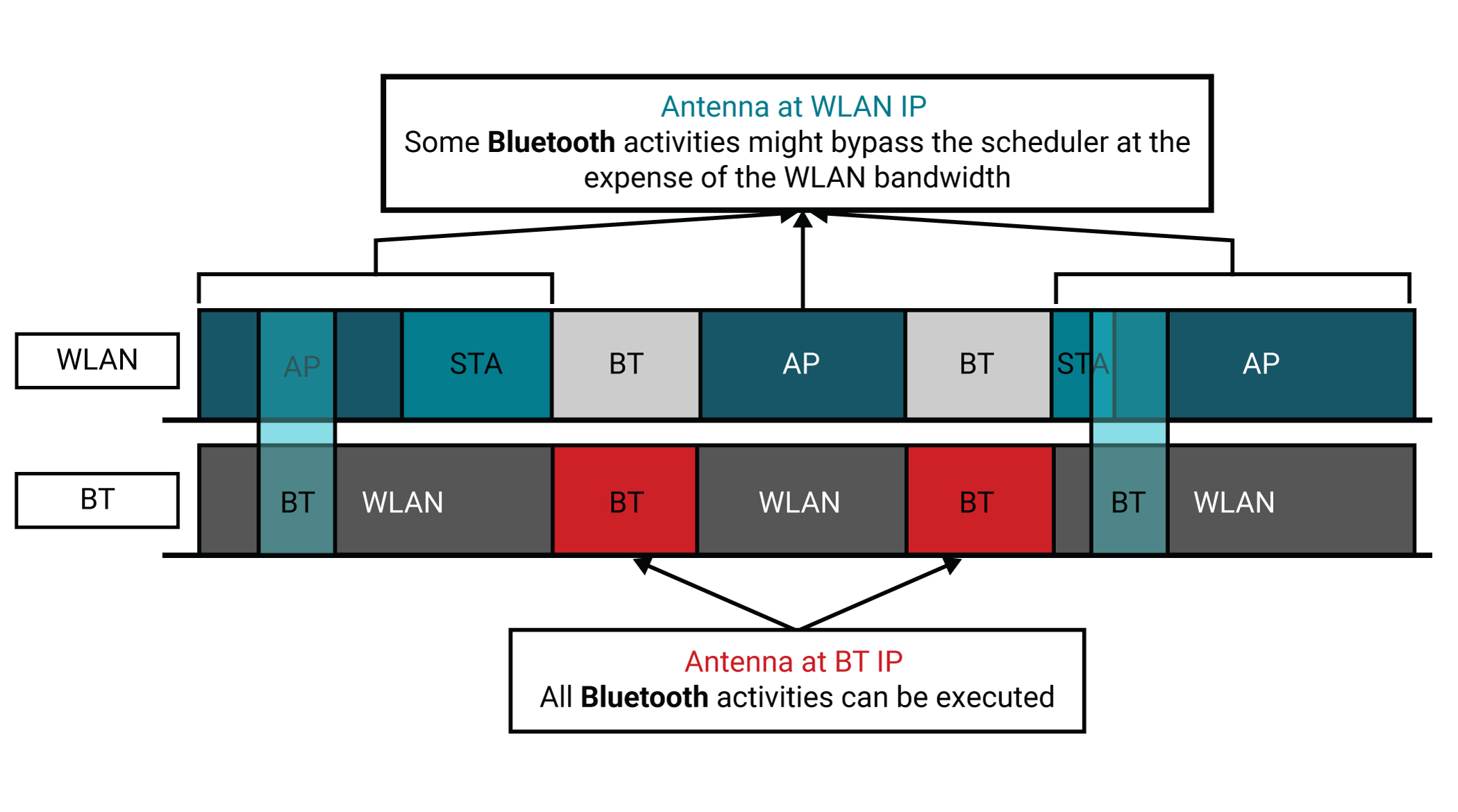SWRA733 March 2022 WL1807MOD , WL1837MOD
4.3 Leveraging MRMC to Improve WLAN-BT Coexistence
Bluetooth is another wireless technology commonly used with WLAN. Bluetooth shares the same radio band (2.4 GHz) with the WLAN roles and can co-exist with them making the scheduling even more complex. From a scheduling perspective, Bluetooth's role is considered equivalent to WLAN, which needs to be scheduled and protected as well. The same principles mentioned before can applied, with some hard-timing Bluetooth activities getting priority and bypassing the scheduler to avoid a bad user experience.
This is further illustrated in Figure 4-2 below.
 Figure 4-2 Scheduling with WLAN-Bluetooth Coexistence
Figure 4-2 Scheduling with WLAN-Bluetooth Coexistence